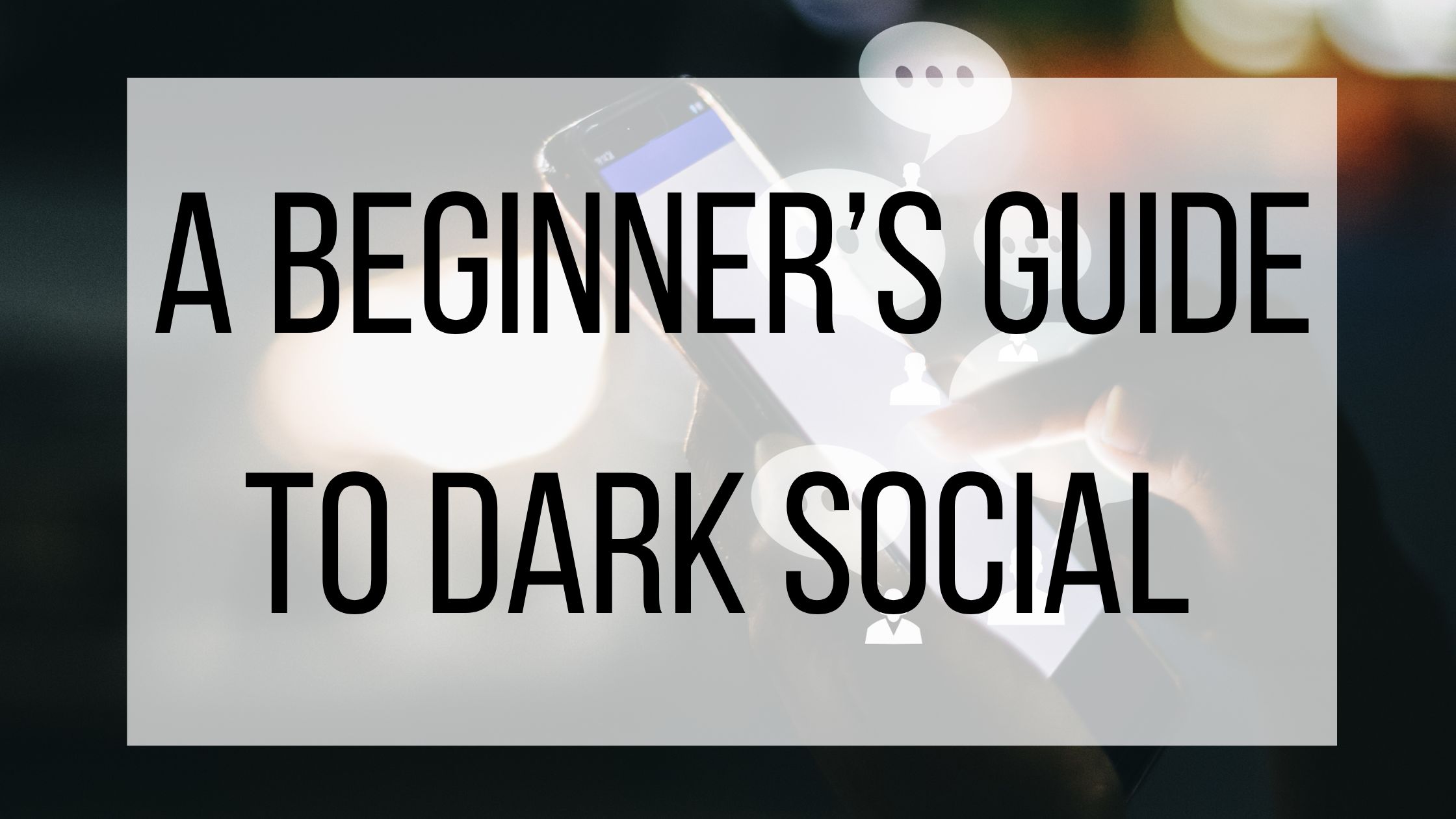A Beginner’s Guide To Dark Social

Part of figuring out what is working for your business is tracking metrics. Shares, mentions, clicked links and more all contribute to helping you learn more about your audience. With so many different tools, monitoring your audience’s behavior and preferences is easier than ever. However, there is another important side of social sharing that is not trackable- dark social. Despite the sinister name, dark social is very common and can be beneficial for your company.
What Is Dark Social?
Dark social is a term created by Alexis C. Madrigal in a 2012 article that refers to social sharing outside of what can be measured by web analytics. Since 2012, dark social has only gotten more popular, with the internet becoming increasingly prominent in people’s daily lives.
Examples Of Dark Social:
Dark social is a lot more common than you might think! Word-of-mouth marketing is one of the biggest channels of dark social. If one of your customers is happy with your product or service and tells one of their friends about you, there is no way for you to know. Private messages are another common form of dark social. Text messages, WhatsApp, and Slack are some examples of channels where users share information with one another without it being tracked. Direct messages on social media cannot be tracked, and private social network groups (for example, Facebook groups you must be approved to join) are popular for sharing information and making recommendations.
Why Dark Social Is Important:
Everyone uses dark social, which means that it is a driving force in influencing customer behavior. Since dark social is not easily trackable, it can be tricky navigating how it affects you (positively or negatively), and what your audience is saying about you in private spaces. Once you have a grasp of dark social, you can use it to help your marketing strategy.
How To Use Dark Social:
Building a private community is an easy way to tap into dark social. Private Facebook groups or forums are good ways to get started. By creating a space for your audience to gather, you are taking some of the guesswork out of what they are saying about you. Being part of the conversations they are having helps you target your audience and personalize engagement to better reflect what they are looking for.
Using a URL shortener like Bitly lets you add tracking information to your links. When someone shares the link, you can see where it is being shared and gain some understanding of your audience’s behaviors.
Encouraging private sharing through provided links helps you track dark social. If you have a blog or popular pages on your website, consider adding links so that your audience can directly share the page via SMS, WhatsApp, or email. This will help you learn where your audience is sharing, where you might be getting more traffic, and how often your audience is recommending you through certain private channels.
While dark social presents its challenges, overall it is a positive thing. Being aware of dark social and having even a basic understanding of it can help you use it to your advantage. Make sure that you are optimizing your content and being open with your audience about data usage. With a little bit of time and effort, dark social can be beneficial to you as well as your customers. Have you heard of dark social before? What is your favorite way to share content with your friends and family?



8 Comments
drudge reporting · July 9, 2024 at 1:39 am
Awesome article! The points you made are spot on and very informative. I appreciate the effort you put into this. Well done!
www.lowes.com/survey · October 15, 2024 at 7:56 am
“Thank you for taking the time to address this subject so thoroughly. Your expertise is greatly appreciated.”
iforgot.apple.com website · October 18, 2024 at 7:37 am
Thank you for this insightful post. It provided valuable information.
rumble.com/pair · December 17, 2024 at 2:23 am
Amazing content as usual.
iforgot.apple.com · December 17, 2024 at 5:59 am
Your insights are always valuable. Thank you for another great read.
tv.youtube.com/start · December 21, 2024 at 1:19 am
Greatfull for the insights in this article. Speaking of great recommendations, tv.youtube.com/start has been a fantastic tool for accessing my favorite content.
mcdvoice.com/survey · December 27, 2024 at 12:51 am
I love that you shared actionable steps at the end of the article. Very helpful.
tv.youtube.com/start · January 6, 2025 at 4:00 am
Thank you for addressing such a relevant topic in a clear and concise manner.